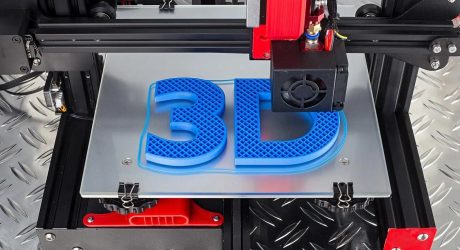Prediction machine learning models are widely used across various industries. For instance, in healthcare, they can predict disease risk and hospital readmission.
In manufacturing, they optimize supply chain management and prevent machine downtime. In finance, such models can identify potential fraud or even market trends. These insights help organizations make data-driven decisions, improve customer experience, and increase operational efficiency.
So, how are these predictive algorithms initially trained? Data labeling, the process of adding labels to datasets to aid ML algorithms in producing precise predictions, is a crucial step here. And many businesses are using data labeling services to improve the efficiency and accuracy of their ML-based projects.
Keep reading to know more about the procedures involved in training an ML model, the fundamentals of data labeling, and the best practices for guaranteeing high-quality labeled results!
What Is A Data Labeling Service?

Data labeling, also known as data annotation, is fundamentally the act of assigning labels to datasets to make them clear for machine learning algorithms. Large volumes of data, however, may be time- and money-consuming to manually label, which is why many businesses opt for professional data labeling services.
Here are some common types of data labeling services:
- Manual labeling: This type entails humans manually annotated datasets. The best suit for this kind of labeling service is complicated or nuanced data that needs human interpretation, such as handwritten language or medical imaging.
- Semi-automated labeling: In this case, labeling is done both manually and automatically, with the use of machine learning techniques. Large datasets that require a lot of labeling but not much human interpretation are best suited for this kind of annotation service.
- Automated labeling: To automatically categorize datasets according to pre-established rules or methods, only ML-based methods are used in this process. For huge datasets that need to have a lot of straightforward labeling jobs completed, like sentiment analysis or picture recognition, this kind of labeling service is optimal.
The fact that 97.2% of organizations are investing in AI and big data is a testament to the growing importance of these technologies in today’s business landscape. Yet, to fully benefit from these developments, companies must ensure that the data they use to train their machine-learning models are reliable. Data labeling services may assist them in rapidly and properly labeling data for AI applications.
How To Train A Predictive Model With A Data Labeling Service
Once you’ve decided on a data labeling service provider that meets your ML project needs, it’s time to start training your predictive model. Here are the steps you can follow:
- Define your problem and goals: Clearly defining tasks and objectives for your predictive model is the first step. To do this, you must decide what information to gather, what features to employ, and what performance indicators to improve.
- Determine the type of data you need: Decide what data you will need to collect and categorize it based on the problem you hope to tackle with your predictive model. Verify that the data is of good quality, useful, and free of mistakes. Also, data must be representative and diverse.
- Collect and label your data: You may use a data labeling company to collect and label the data you require for your model. To do this, you must first provide them with your raw data and then let the specialists do the rest.
- Split your data into training and validation sets: You must separate your annotated data into sets for validation and training after it has been labeled. The training set is used to evaluate your prediction model and its efficacy.
- Train your model: Once having obtained your labeled data and training/validation sets, you can start training your prediction model. To do so, select a machine learning algorithm, establish the hyperparameters, and run the training process.
- Evaluate and fine-tune your model: After training, you must evaluate how your model did on the validation set. If your model isn’t doing well, you may modify it by altering the hyperparameters, selecting a different algorithm, or gathering more data.
Sticking to the aforementioned rules will help you effectively train a predictive model. Remember that the quality of your annotated data determines the performance of your model, so choose a credible and trustworthy service that can produce precise labels.
Choosing A Reliable Data Labeling Service Provider

When it comes to finding the right data labeling service provider, there are a few key factors to consider:
- Quality of labeling: You must use well-annotated data for building your predictive model to reach your goal. Choose a supplier who has a track record of producing precise labels and success stories with their clients.
- Speed and scalability: Look for a service provider who can handle big amounts of data and get the job done rapidly, depending on the size and complexity of your data.
- Flexibility: Various labeling workflows are needed for various sorts of data. Choose a vendor who can adjust their labeling strategy to meet your specific requirements.
- Security and confidentiality: Because data labeling deals with sensitive information, it’s crucial to pick a company that values security and confidentiality.
- Cost-effectiveness: Look for a business that offers data labeling at a reasonable price without compromising quality.
An expert data annotation company can tick all of these boxes. This company has a group of knowledgeable annotators that are skilled in producing accurate labels for a variety of data formats, including text, image, video, and audio data.
Moreover, they provide quick turnaround times and customizable labeling strategies to meet your individual requirements. Also, they place a high priority on security and confidentiality, guaranteeing that your data is always safe.
On A Final Note
Using a data labeling service may significantly improve the accuracy and efficacy of your prediction model. You can make sure that your dataset is correctly labeled and that your model is trained on high-quality data by employing a third-party company. By increasing your model’s accuracy, you may gain greater insights and make better business decisions.
So, to assist you with getting better outcomes while training a predictive model, think about enlisting the support of a data labeling service. This way you can be confident that your data is accurately labeled, and your model is trained to the highest standards.
Read Also:




























